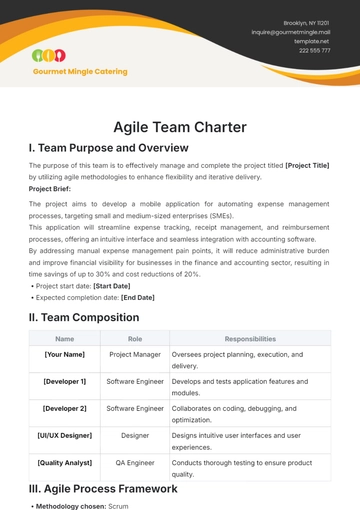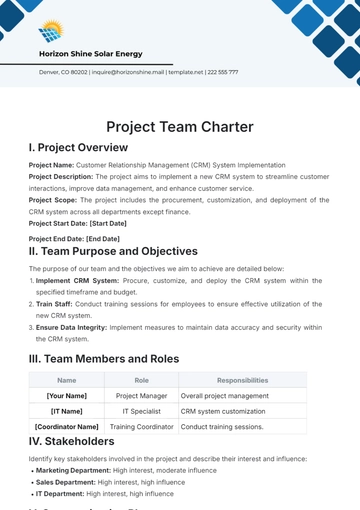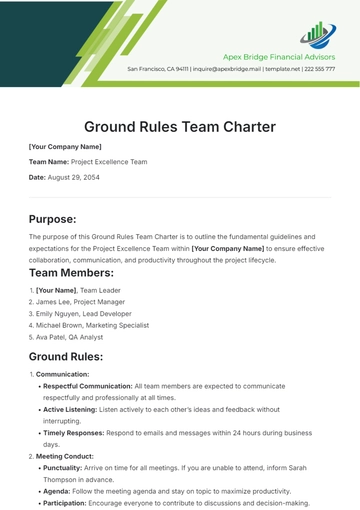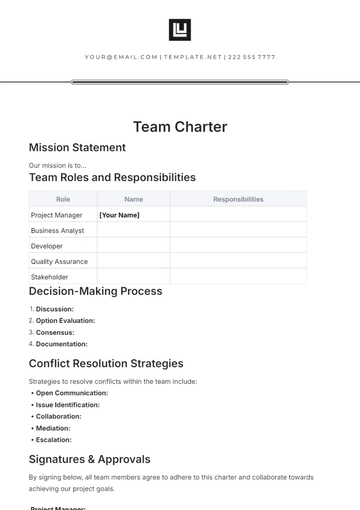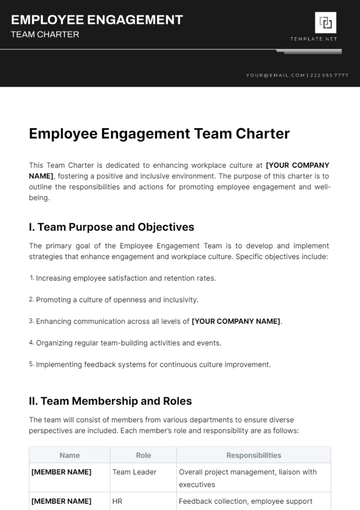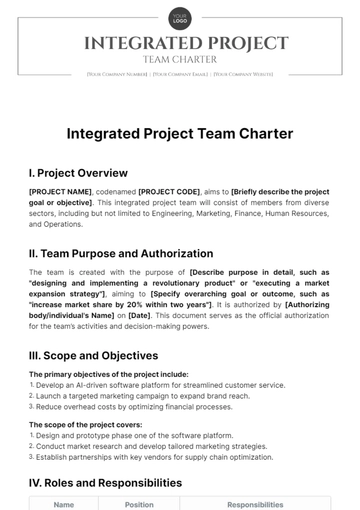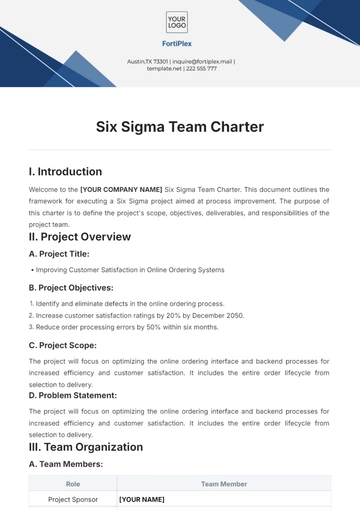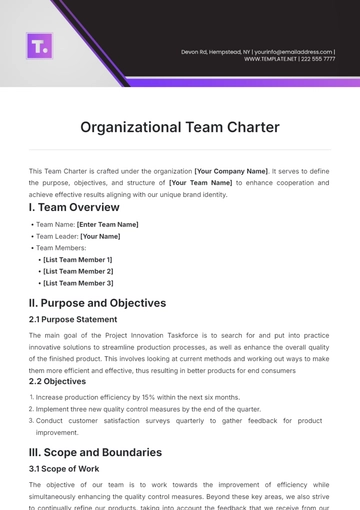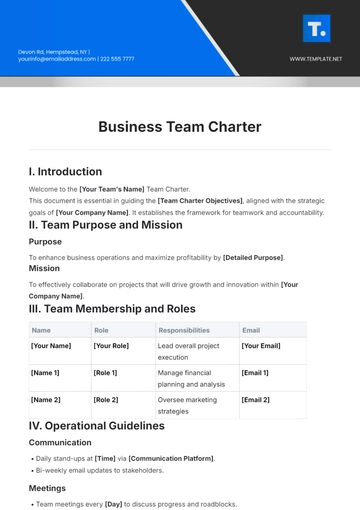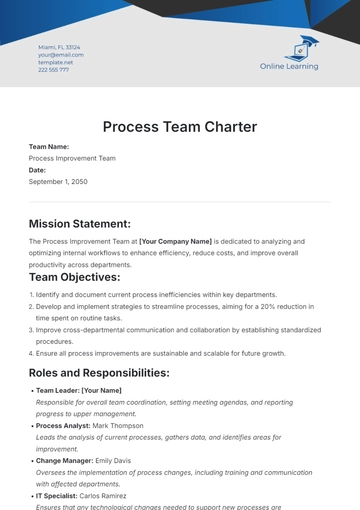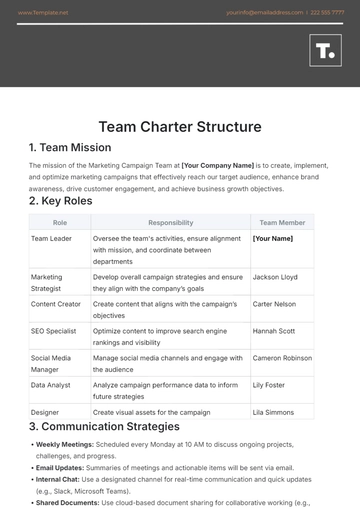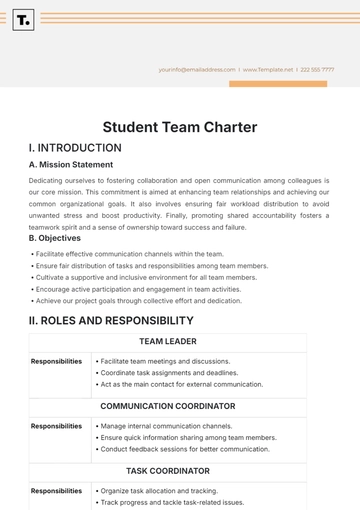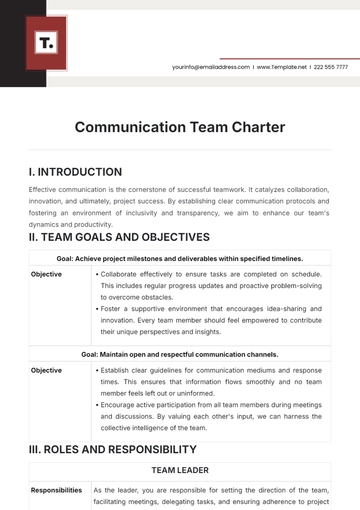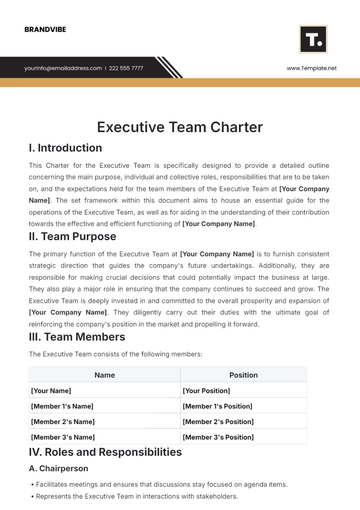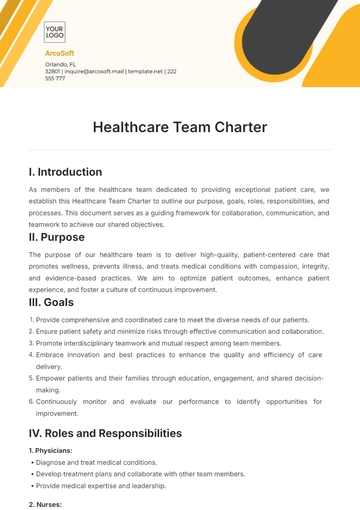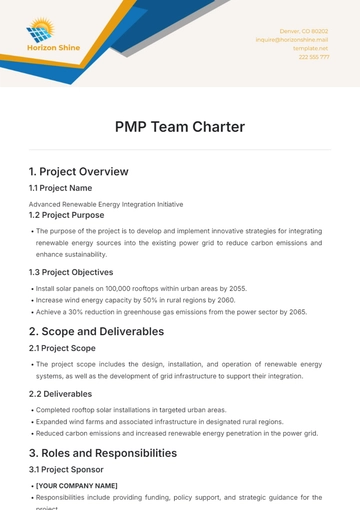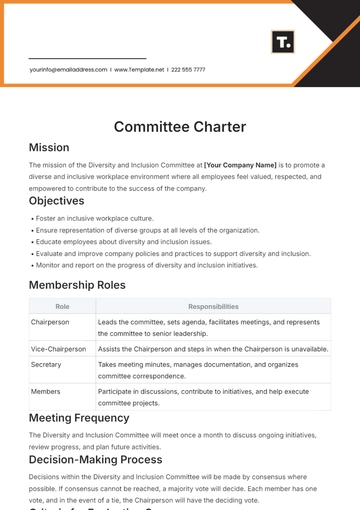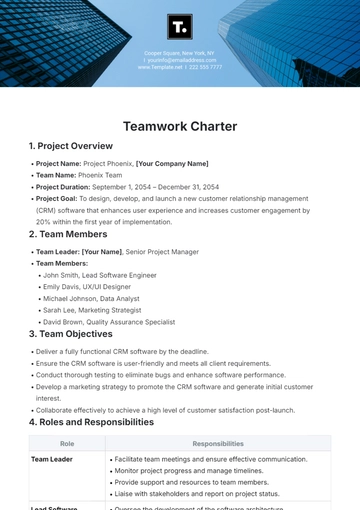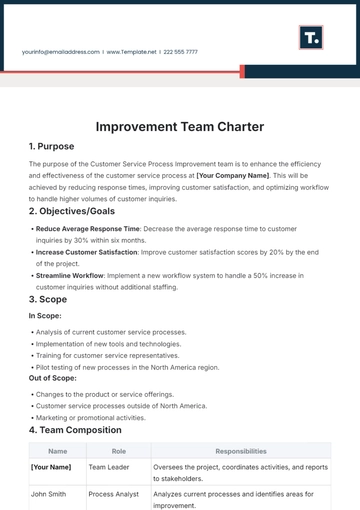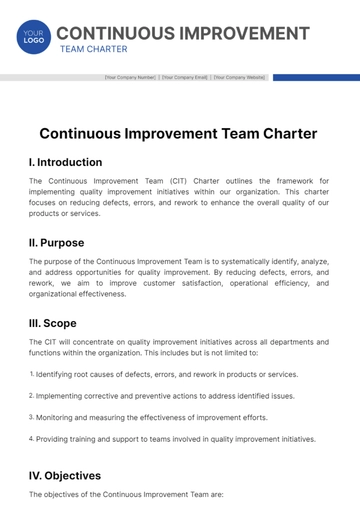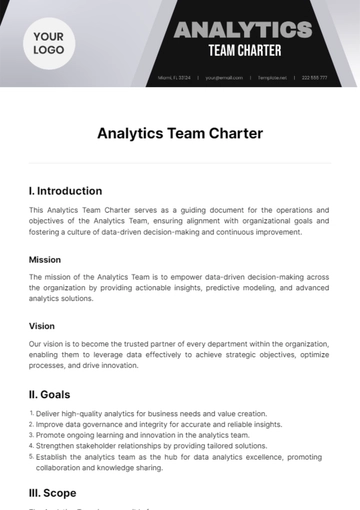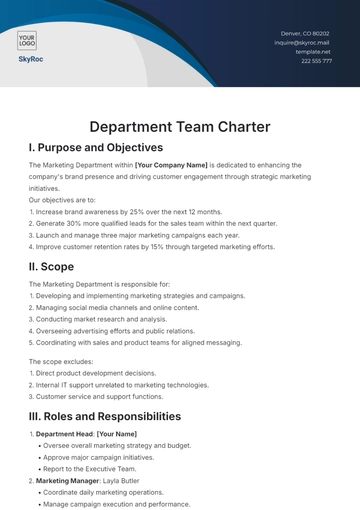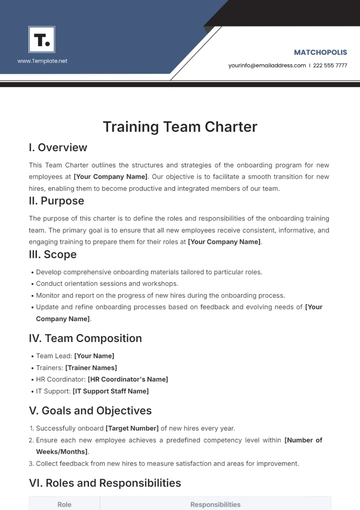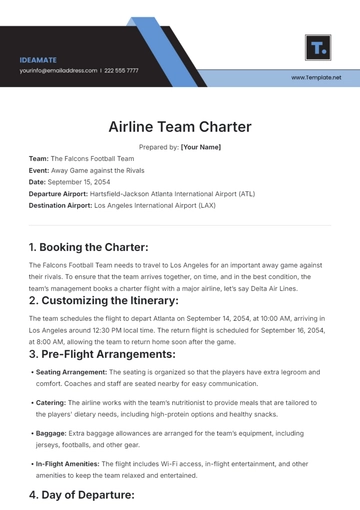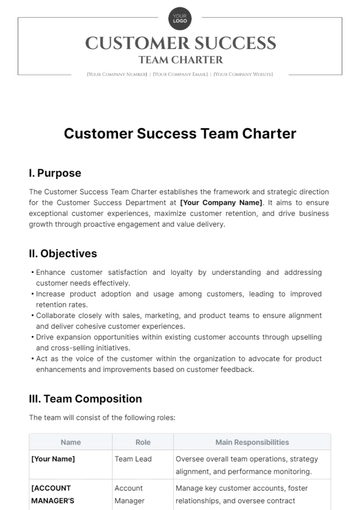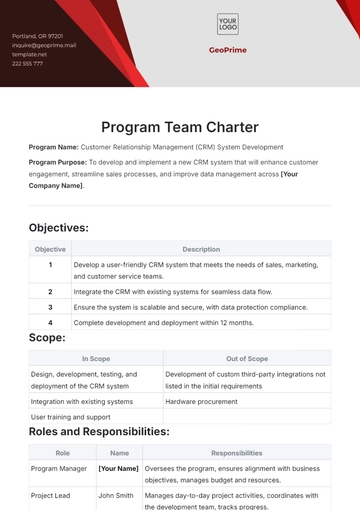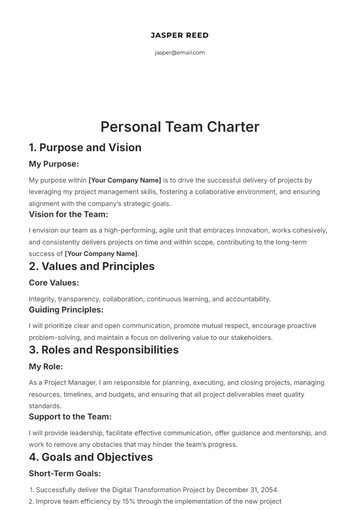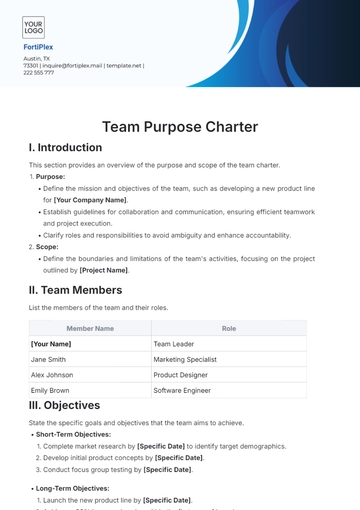Free Organizational Team Charter
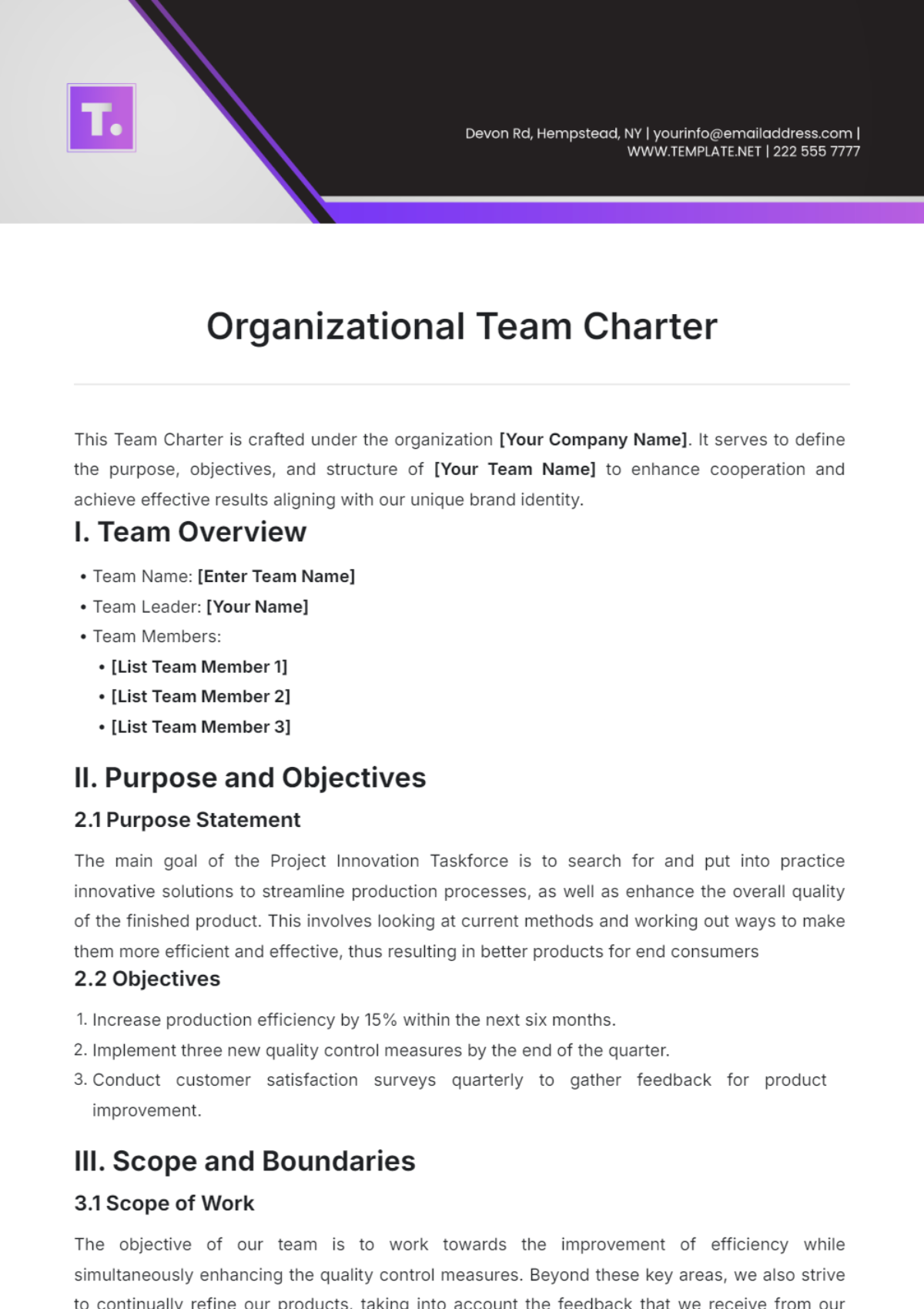
This Team Charter is crafted under the organization [Your Company Name]. It serves to define the purpose, objectives, and structure of [Your Team Name] to enhance cooperation and achieve effective results aligning with our unique brand identity.
I. Team Overview
Team Name: [Enter Team Name]
Team Leader: [Your Name]
Team Members:
[List Team Member 1]
[List Team Member 2]
[List Team Member 3]
II. Purpose and Objectives
2.1 Purpose Statement
The main goal of the Project Innovation Taskforce is to search for and put into practice innovative solutions to streamline production processes, as well as enhance the overall quality of the finished product. This involves looking at current methods and working out ways to make them more efficient and effective, thus resulting in better products for end consumers
2.2 Objectives
Increase production efficiency by 15% within the next six months.
Implement three new quality control measures by the end of the quarter.
Conduct customer satisfaction surveys quarterly to gather feedback for product improvement.
III. Scope and Boundaries
3.1 Scope of Work
The objective of our team is to work towards the improvement of efficiency while simultaneously enhancing the quality control measures. Beyond these key areas, we also strive to continually refine our products, taking into account the feedback that we receive from our customers. All these dedicated strategies are aimed at our leading product series to maximize their performance and quality.
3.2 Boundaries
Due to budgetary restrictions, major capital expenditures represent a notable constraint and cannot be implemented without prior approval. This is to prevent any accidental or unanticipated large expenses from breaching the established financial boundaries.
IV. Roles and Responsibilities
Team Leader Responsibilities: My responsibilities include leading team meetings, providing guidance on project priorities, and establishing a connection with upper management to ensure that tasks are aligned with the organization's objectives.
Team Member Responsibilities: You are expected to provide your thoughts and ideas that could contribute to the improvement of our process. Furthermore, you should also be prompt in executing the tasks we assign to you. For us to function well as a team, you must collaborate effectively with all other members of the team.
V. Decision-Making Process
Decision-Making Criteria: Decisions will be based on data-driven analysis, alignment with project objectives, and input from cross-functional stakeholders.
Decision-Making Procedures:
Identify Decision: Identify critical decisions during weekly team meetings or via email communication.
Gather Information: Utilize market research, internal data, and stakeholder feedback for informed decision-making.
Evaluate Options: Assess pros and cons, risks, and potential impact on project timelines and resources.
Make Decision: Consensus-based decision-making among team members with escalation to a team leader if consensus is not reached.
Implement Decision: Communicate decisions via team meetings, email updates, and project management tools. Assign tasks for implementation.
VI. Communication Guidelines
Communication Channels: Regular communication will be maintained through email exchanges and daily updates on Slack. Additionally, video conference calls will be scheduled bi-weekly.
Frequency and Updates: The team gets daily updates on Slack and weekly reviews about achievements, issues, and next week's goals. Each month, we summarize project status, milestones, challenges, and plans for the next month.
Conflict Resolution: Discuss disagreements openly in group meetings for a shared understanding and problem-solving. If disputes persist, the team leader should intervene and guide toward a mutual resolution.
VII. Meetings and Reporting
Meeting Schedule: Weekly team meetings every Monday at 10:00 AM, bi-weekly project progress meetings on Wednesdays at 2:00 PM.
Agenda and Minutes: Agendas are shared before meetings, and minutes are recorded and circulated within 24 hours after each meeting.
Progress Reporting: Weekly progress updates during team meetings, and monthly progress reports submitted to department heads.
VIII. Resources and Support
Resource Allocation: The process of reviewing budget allocations takes place quarterly, while requests for resources are submitted through the channels that have been officially designated for this task.
Support Systems: There is provision for access to tools essential for project management, assistance from the information technology department for any technical issues that may arise, and beneficial mentorship that is offered by senior members of the team.
IX. Review and Revision
Review Schedule: Meetings are held every quarter to review and assess the effectiveness of the charter. During these sessions, if necessary, revisions are made to ensure the charter continues to meet its intended purpose and functions as efficiently as possible.
Revision Process: The team leader initiates the review process, solicits feedback from team members, updates the charter document, and communicates changes to the team.
- 100% Customizable, free editor
- Access 1 Million+ Templates, photo’s & graphics
- Download or share as a template
- Click and replace photos, graphics, text, backgrounds
- Resize, crop, AI write & more
- Access advanced editor
Align your organization's teams with our Organizational Team Charter Template on Template.net. This editable and customizable document facilitates clear communication of roles, responsibilities, and goals across teams. Use our AI Editor Tool to customize it effortlessly, fostering cohesion and efficiency throughout your organization. Enhance team collaboration and productivity by establishing clear guidelines and expectations, leading to streamlined workflows
